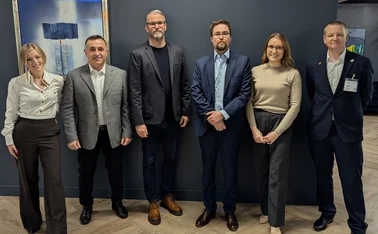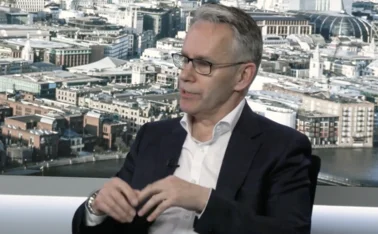
Spotlight: Technology – Embracing evergreen technology

Outdated legacy systems have haunted the insurance space for years, stifling innovation and pushing up development costs. Now, with pressures coming from new entrants and customer expectations increasing, Post looks at why insurers are looking to evergreen technology solutions to fast-forward their IT plans
The need to migrate from a legacy approach to low code configuration has never been clearer, as Neil Walker, head of architecture at Covea Insurance, explains: “A lot of legacy technology is monolithic. Insurers need to be able to respond quickly to customer and business needs but legacy technology makes this really difficult.”
Hamstrung by legacy systems, something as simple as launching a new product can take 12 to 18 months. In that time, a more nimble insuretech could have captured that niche or customer tastes may have moved on.
Over the last five years or so, many insurers have grappled with the shift to digital but Scott Field, senior director of product marketing and strategy, says insurers need to move forward. “Technology has taken a huge step forward in the last five years,” he explains. “Insurers need to be looking at cloud and Software-as-a-Service options. It’s time to draw a line under it and move forwards.”
Migration challenges
Switching from a legacy approach is not without its challenges. The scale of the project can cause issues, as Akhlas Hafiz, director of digital transformation and customer delivery at RSA, explains: “We’re moving to more modern platforms with a cloud and digital strategy but it takes time. We don’t want it to be a big bang so we’re adopting a level of horizontal thinking to determine the journey.”
This has seen RSA leverage tools that can be used across the business and use application programming interfaces to connect slick front-end systems to existing servers. This has enabled it to enhance the customer experience while still keeping the older systems in the background.
It can also be a challenge identifying which areas of existing technology require an upgrade. “Low code configuration isn’t the answer to everything,” says Mark Budd, head of innovation at Zurich Insurance. “It works well for more bespoke options outside the core and front-end applications.”
Another challenge is cost. Migrating from legacy systems is an expensive project but it’s not always easy to pin down the costs to support the business case.
Field says this could be down to the way estates have evolved. “Insurers know what the IT spend is but it’s more difficult to work out the detail. Is it for suppliers, consultants or infrastructure? Local, regional or global? This makes it difficult to understand the cost of ownership,” he explains.
This financial argument also needs to factor in the cost of inefficiencies. Hafiz says that where an insurer can make improvements by moving from highly complex systems to SaaS it can take a lot of the cost out. “It’s important that IT and the business go into the portfolio planning cycle together,” he adds.
Flexible benefits
Any argument for a switch also needs to consider the benefits. Flexible software solutions can also lead to more agility and resilience, enabling insurers to respond quickly to customer and business needs.
Agility comes through the ability to develop new products quickly. Rather than spend a year or more configuring existing systems, low code configuration enables an insurer to build an application quickly. “It gives us pace,” says Walker. “We can launch a micro-product much faster and in a more fluid way.”
In addition, as change and development is taking place on a much smaller scale, insurers can continuously reprioritise and adapt to demands.
The simplicity and transparency of the approach also helps to create resilience. This is further enhanced where evergreen technology is deployed. As it’s dependent on the provider to upgrade the service, insurers always benefit from the latest version with the stability and security this brings.
An evergreen approach can also drive out inefficiencies, reduce costs and lead to better business outcomes. As an example, Hafiz points to data storage. “With older systems, if you didn’t have enough data storage you’d buy more and more for your servers. With evergreen, capacity requirements depend on usage, with costs based on consumption. This model makes costs more predictable than with an older, licence-based approach,” he explains.
Adopting an evergreen approach should also result in fewer ‘big bang’ migration projects. Adam Miller, group head of IT at Markerstudy Insurance, says that if you deliver change in small, bite-sized chunks, on an iterative basis, you can reduce the need for, and the cost of, a large governance overhead. “If a small change to an individual function goes wrong, your ‘blast radius’ is limited. In comparison, if a big bang migration goes wrong, the blast radius can encompass the entire organisation.”
Better business
Deploying the latest technology can also help insurers win the talent war, enabling them to compete against more tech-forward companies. “Who leaves college or university and wants a job working on a 1970s green screen, when their final year thesis was on machine learning and artificial intelligence?” says Miller. “By using a newer technology stack, investing in your people and developing innovative projects, you’ll hold the key to retaining the best talent.”
It’s not just an insurer’s IT department that will feel the recruitment benefits. Hafiz says that having the latest technology leads to more interesting projects, enhances customer experience and improves reputation.
“This all helps to attract the best talent right across the business,” he adds.
As staying ahead of the technology game delivers so many benefits, insurers are constantly looking out for what’s new. “We’re always looking for opportunities to simplify and increase the pace of transformation,” says Hafiz. “We need to look for innovation and have multiple conversations with providers to understand how the market is evolving. There’s competition from the insuretechs every day.”
The technology providers are well placed to support insurers in this horizon scanning exercise. “A key part of our role is to anticipate what’s coming next,” says Field. “Our experience across our customer base and globally enables us to identify new opportunities and help insurers move forward.”
As the benefits – and necessity – of adopting more flexible and innovative technology become increasingly apparent, insurers are making good progress with their IT transformation projects. “Insurers have to go back to the knitting and compete on areas such as product, service and brand,” says Field. “The rest – including technology – is cost.”
Further reading
Only users who have a paid subscription or are part of a corporate subscription are able to print or copy content.
To access these options, along with all other subscription benefits, please contact info@postonline.co.uk or view our subscription options here: https://subscriptions.postonline.co.uk/subscribe
You are currently unable to print this content. Please contact info@postonline.co.uk to find out more.
You are currently unable to copy this content. Please contact info@postonline.co.uk to find out more.
Copyright Infopro Digital Limited. All rights reserved.
As outlined in our terms and conditions, https://www.infopro-digital.com/terms-and-conditions/subscriptions/ (point 2.4), printing is limited to a single copy.
If you would like to purchase additional rights please email info@postonline.co.uk
Copyright Infopro Digital Limited. All rights reserved.
You may share this content using our article tools. As outlined in our terms and conditions, https://www.infopro-digital.com/terms-and-conditions/subscriptions/ (clause 2.4), an Authorised User may only make one copy of the materials for their own personal use. You must also comply with the restrictions in clause 2.5.
If you would like to purchase additional rights please email info@postonline.co.uk









